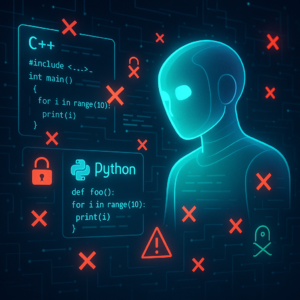Bridging Borders: How AI Models Weigh Moral Decisions Across Cultures

Bridging Borders: How AI Models Weigh Moral Decisions Across Cultures
AI Models Making Moral Decisions: What’s the Fuss All About?
A world dominated by artificial intelligence (AI) is not just a sci-fi dream—it’s our reality. Our lives are becoming more and more intertwined with AI systems, from recommending what to watch next to drafting the latest piece of creative writing. But have you ever thought about how these AIs decide what’s “right” or “wrong”? Turns out, they have a mind of sorts, shaped not by human culture but by algorithms and datasets. A recent study delved into how large language models (LLMs), like ChatGPT and Ernie, make moral choices and how these choices differ across cultural lines.
Cracking the Code: How AIs Handle Moral Dilemmas
Imagine asking a machine to pick between saving one person or five in a dire situation. Tricky, right? This study used a framework to make sense of how AI models process these complex moral questions. Here’s how the researchers split it up:
Moral Scenarios and Dilemmas
The researchers kicked things off by creating a dataset jam-packed with 472 moral choice scenarios. These situations came from moral words in Chinese, highlighting dilemmas that aren’t always black or white. Think of it like a game of moral chess: each move could have a ripple effect.
Understanding Moral Principles
The study uncovered how different language models seemed to favor different moral principles. What does that mean? Well, when faced with these 472 scenarios, each model showed a particular leaning—sort of like having a favorite flavor of ice cream when it comes to moral decisions. Interestingly, the choices made by English-based models like ChatGPT leaned toward individualistic values, aligning them closely with decisions made by Chinese university students. On the flip side, Chinese models, like Ernie and ChatGLM, veered toward collectivist ideals.
Debate Club for AI
Picture two AIs debating who has the stronger argument in a moral dilemma. The researchers did just that! They set up debates between the models to see how firm they were in their choices. The results? English models held their ground better, mirroring the more decisive nature of Western individualistic culture, whereas Chinese models were less certain, reflecting a cultural tendency toward moderation and collective harmony.
Bridging the Cultural Gap: Why It Matters
Why should you care about AI models making moral choices? These intricacies have far-reaching implications. For starters, developing AI with a keen sense of “right” and “wrong” could help mitigate risks associated with biased moral decisions—a pressing concern in our diverse world.
Real-world Applications
-
Safe Decision-Making in AI: Understanding how these models operate in diverse cultural contexts helps in creating more ethically sound AI systems for applications like autonomous vehicles, which need to make split-second ethical decisions.
-
Bias Detection and Mitigation: This study also shines a light on gender biases within AI. By identifying inconsistencies, developers can work toward building more balanced and equitable systems.
-
Enhanced User Experience: AI that aligns with the moral standards of diverse communities can improve user satisfaction and trust, making these technologies more effective.
Key Takeaways
-
Moral Frameworks Matter: AI models use a unique framework to evaluate moral decisions, revealing preferences for certain moral principles depending on cultural context.
-
Cultural Bias in AI: There’s a notable difference in how English and Chinese models handle moral debates, with English models showing more firmness and alignment with Western individualistic ideals.
-
Bias Risks: All models tested showed some level of gender bias, highlighting the need for continuous improvement in AI fairness.
-
Practical Impact: Understanding AI’s moral leanings has real-world implications for safer, more ethical AI development across industries.
So, the next time you interact with AI, remember that behind those ones and zeros are complex moral algorithms at work, influenced by cultures from across the globe—a fascinating crossroad of technology and human values!
If you are looking to improve your prompting skills and haven’t already, check out our free Advanced Prompt Engineering course.
This blog post is based on the research article “Evaluating Moral Beliefs across LLMs through a Pluralistic Framework” by Authors: Xuelin Liu, Yanfei Zhu, Shucheng Zhu, Pengyuan Liu, Ying Liu, Dong Yu. You can find the original article here.




